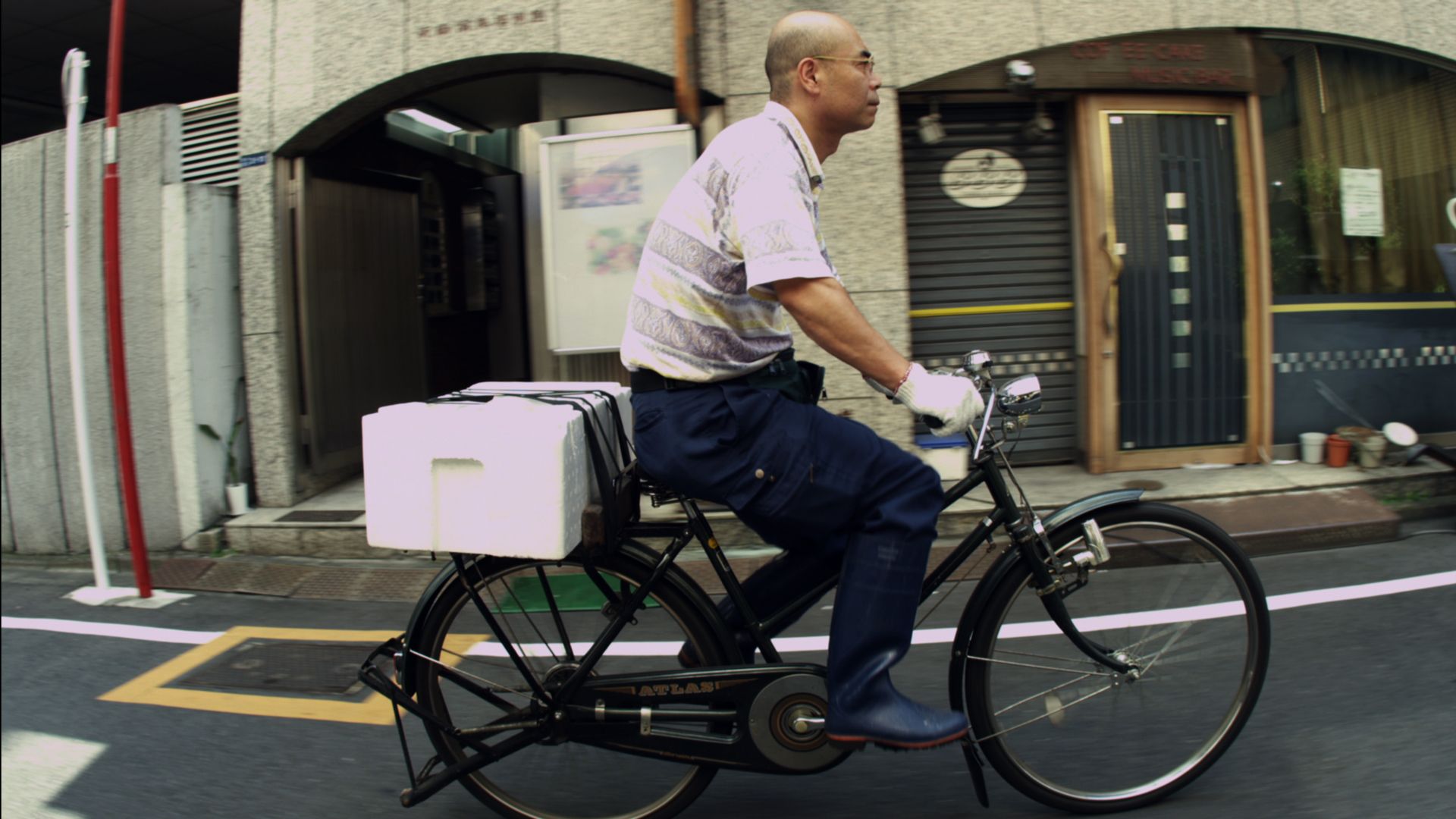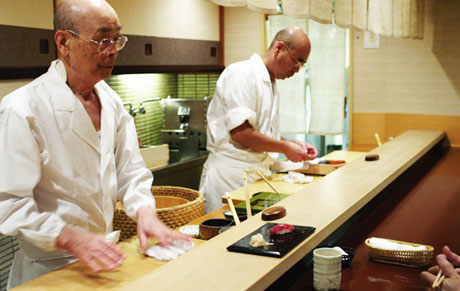Directed by David Gelb
Japan, 2011
Do not go to see Jiro Dreams of Sushi on an empty stomach. Guaranteed to make even the sea-squeamish turn mouthwateringly to eel, salmon roe, and tuna, the film will put your Milk Duds and large Sprite to shame.
Despite its title, Jiro Dreams of Sushi is not prime fodder for the Food Network. The titular 85 year-old Jiro Ono is less a verbose character in the Guy Fieri model than the softly passionate, intimidating, and above all happy, greatest sushi chef in the world.
Jiro runs his own small, ten-seat, Michelin 3-starred restaurant in Tokyo, with his son Yoshikazu. As told mainly by Jiro himself, Yoshikazu, and Japanese food critic Masuhiro Yamamoto, the master chef remains tireless in his quest for the perfect sushi roll.
While director David Gelb’s methodical and graceful documentary certainly focuses on the food, it’s also very much about Jiro’s insulated world – those that surround him and who together, all play an integral role in putting the delectable delicacies, which Gelb frequently renders in extreme close-up, to plate.
It’s these close-ups that begin the film, which establish a motif running throughout: process. From the slow motion tying of an apron, to the steady fanning of a straw stove, to the thinly sliced eel settling gently over its bed of rice, Gelb’s film finds a patient rhythm in Jiro and Yoshikazu’s kitchen-work. This process extends beyond the restaurant to the fish markets and the fishermen – finding the perfect cut of tuna, searching through the waning number of shrimp. The result is both emblematic of Jiro’s influence and a steadfast portrait of one man’s astounding, 75-year passion. If patience truly is a virtue, Jiro is virtuous.
Gelb’s film is quiet, allowing his subjects’ interviews and the sounds of the kitchen and nearby fish market to dominate the soundtrack, occasionally interrupted by brazenly operatic montages. That’s not to say that we sit back and stare at food for 81 minutes. The presentation is as cinematic as the visions of sushi rolls dancing in Jiro’s head. Slow motion and time-lapse photography, extreme close-ups with a shallow depth of field, long camera moves through the bustling fish markets all raise the documentary far beyond the standard talking-head interview style, and attempt to pay an appropriate amount of aesthetic homage to Jiro the artist.
For all of the talk about food, Jiro Dreams of Sushi is also philosophical. There’s a repeated mantra in the film: ‘it’s not for the money.’ Though a meal at Jiro’s restaurant begins at 30,000 yen – a pretty penny by nearly any cuisine standards – the anti-capitalist, pro-pleasure sentiment remains believable. This is due largely to the candid, often funny interviews with Jiro, Yoshikazu and Jiro’s younger son, Takashi, which reveal Jiro as a stern, loving, complex man. The three talk openly about weighty issues such as rivalries, death and expectations. And this is really the metaphorical heart of the film: that something so small and delicate can be the center of relationships so intricate.
There’s a twist towards the end of Jiro Dreams of Sushi, as revealed by Yamamoto. It’s effective, ultimately heartfelt, and handled deftly by Gelb, who could easily have spiraled the film into melodramatic father-son enmity to play for cheap thrills. Instead, the twist, mentioned only in passing and easily missed, adds to the wonder and respect with which the film treats its subjects. These two men, Jiro and Yoshikazu, are nearly mythical. As Yamamoto says, this is the kind of restaurant that you travel to another country to eat at.
– Neal Dhand




